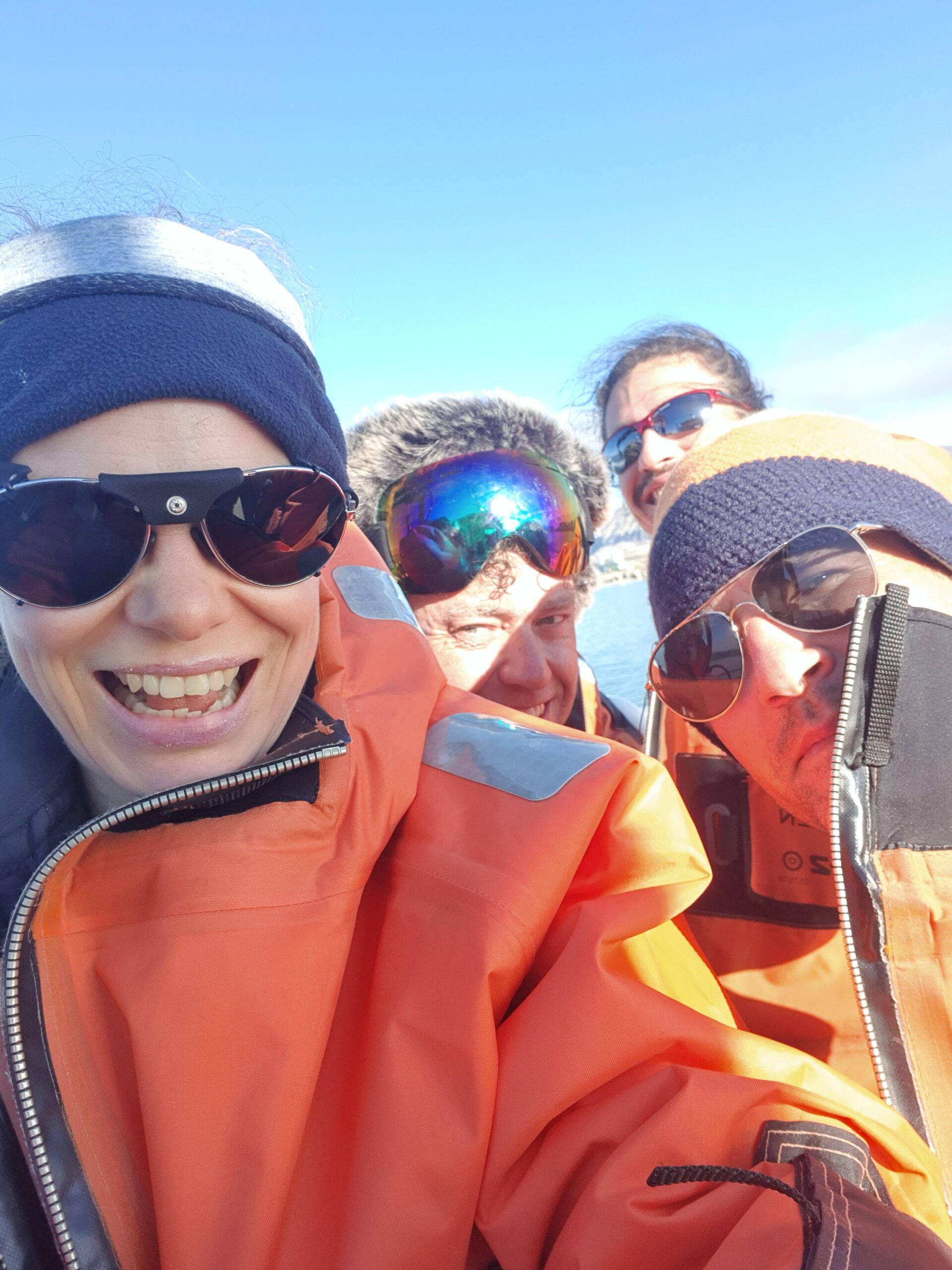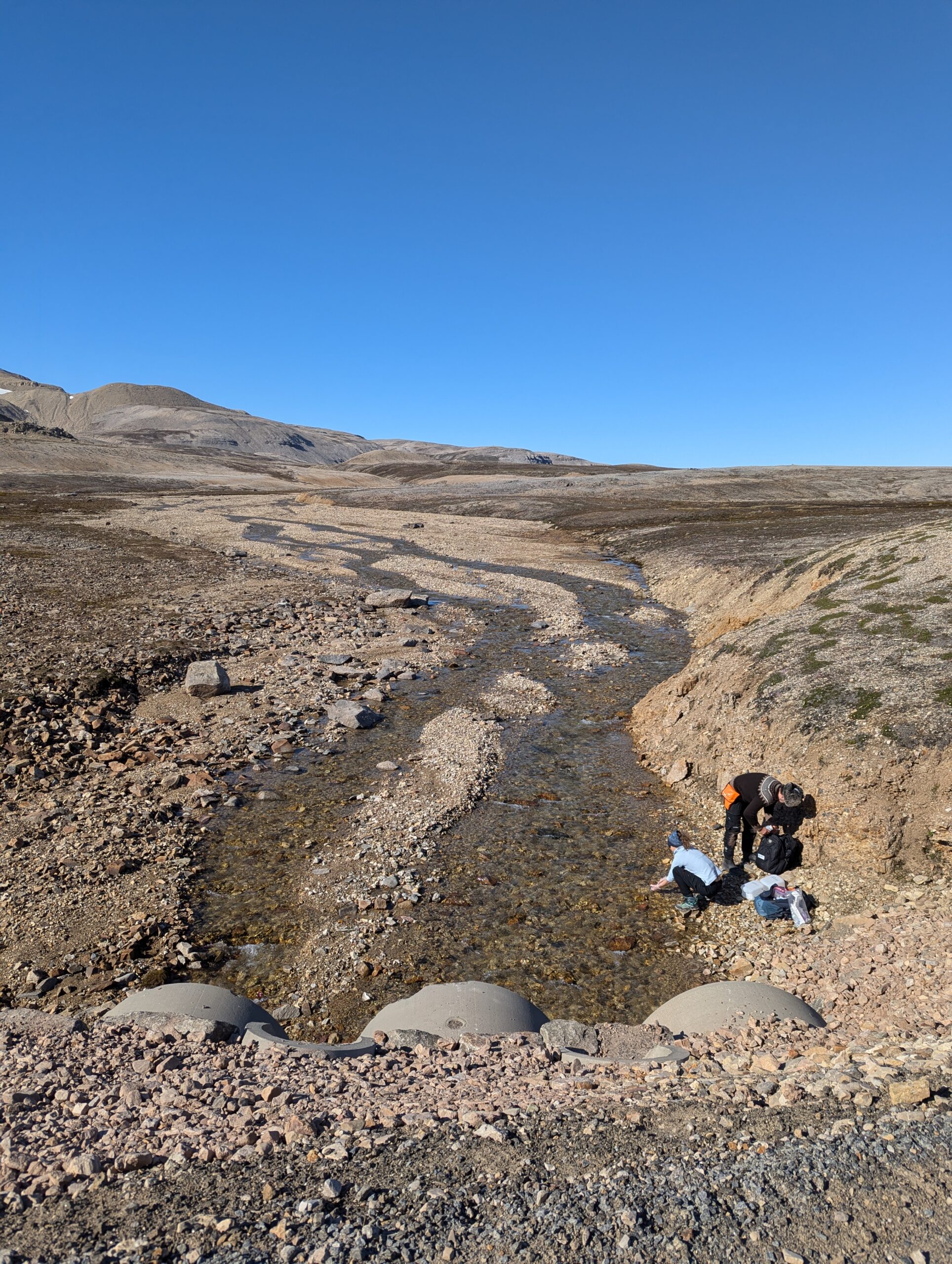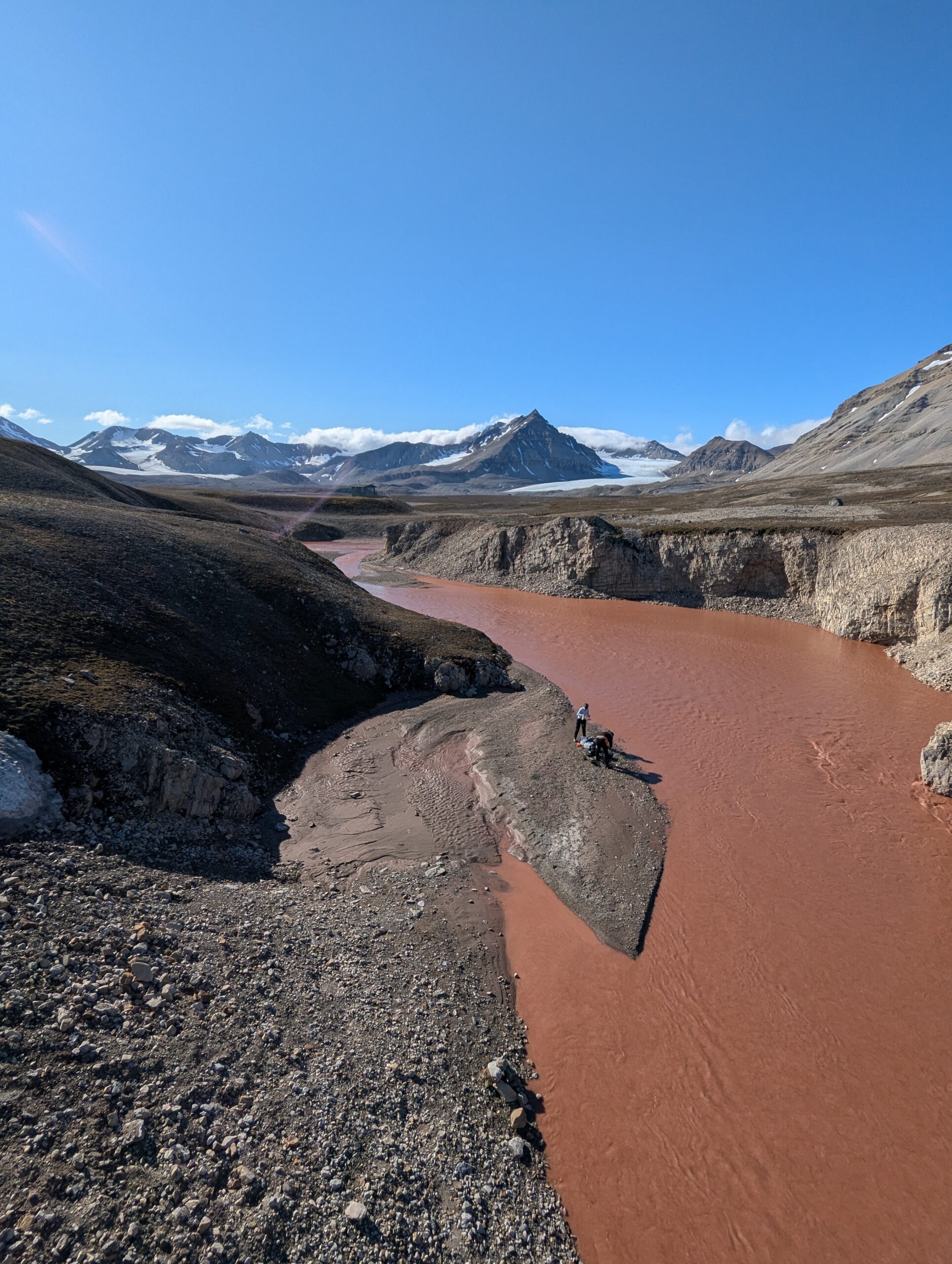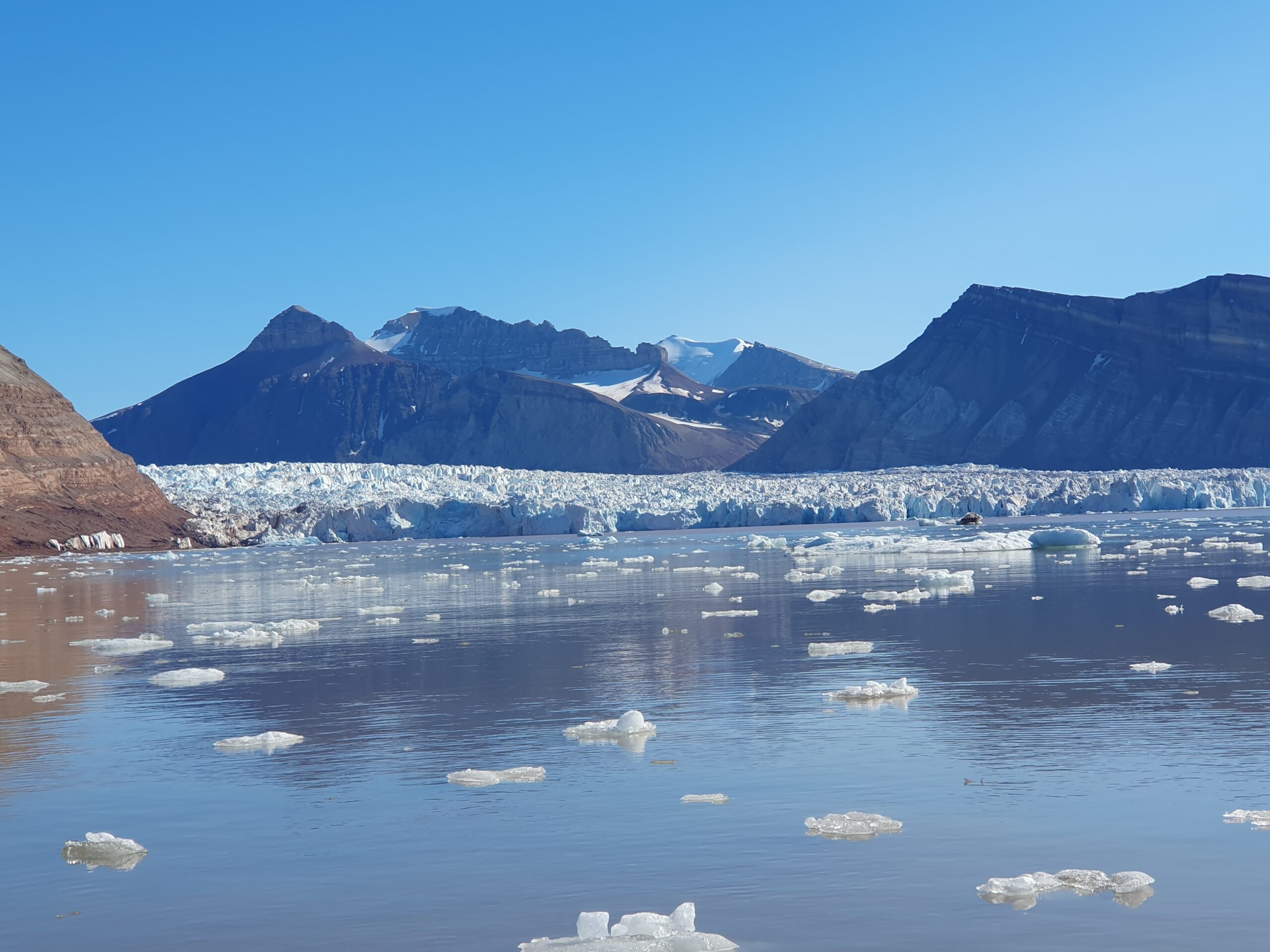Can glaciers feed the ocean?
29 July, 2024 Arctic
You might imagine glaciers as vast, cold, and lifeless rivers of ice, but they’re far more dynamic and alive than we once thought. Kate Hendry, polar oceanographer at British Antarctic Survey is currently working in the Arctic. Below, she shares some insights from her recent research on these frozen rivers, and their impact on our oceans.

Glaciers – vast rivers of ice that flow from ice caps and ice sheets – were once thought to be inert environments, too cold for biology or for chemical reactions to occur. In the past two decades, scientists have discovered that glaciers are teeming with diverse microorganisms and are hotspots for biogeochemical weathering—chemical processes that release essential elements into the environment. As glaciers flow, they grind the underlying rock into a fine “flour,” and the unique chemistry of the waters beneath these ice sheets leads to the formation of new, highly reactive materials. This glacial flour can release nutrients into the environment, acting as a significant source of precious elements for coastal marine ecosystems. While glacial flour has the potential to fertilize crops, it can also harbour toxic metals. We are just beginning to unravel the intricate web of interactions among these elements as they travel downstream.

Unveiling the role of silicon
One key nutrient we’re focusing on in our new project, Silicon Cycling in Glaciated Environments (SiCLING), is silicon. Every living organism needs silicon in small amounts, but some, like plants and diatoms (a type of algae), need larger quantities to build their silica-based structures. Glacial flour is rich in reactive detritus that dissolves, releasing biologically available silicon. This means it could be a vital nutrient source for crops and coastal marine systems deficient in silicon.
Through SiCLING, we’re investigating how silicon in glacial flour and fjord sediments is released, interacts with other elements like iron, and changes with global warming and accelerated ice melting.
Our journey begins in Ny-Ålesund, northern Svalbard, in the land of the polar bear. Here, we’re sampling water, flour, and sediments from Kongsfjorden near the UK Arctic Research Station. Using small boats, we collect samples and process them in the station’s labs. Many analyses will be done back in the UK, where we’ll use cutting-edge imaging and geochemical fingerprinting to understand silicon’s interactions with other elements. With all the data we gather, we’ll use new modeling methods to calculate how much silicon glaciers in Svalbard release.
Later this year, we will continue our fieldwork adventure by comparing our Arctic findings to coastal environments off the West Antarctic Peninsula.

Meet the team
I am proud to lead the SiCLING project as the Deputy Science Leader of the Polar Oceans Team at the British Antarctic Survey. Joining me in Ny-Ålesund are Nathan Callaghan from the UK Centre for Ecology and Hydrology and Katie Howe from Dauphin Island Sea Lab, USA. Nathan is working on river chemistry and fluxes, and Katie is joining us as an expert in isotope uptake experiments. Our team also includes Rhiannon Jones and Siobhán Foden from BAS, and Helen Williams, and Helena Pryer from the University of Cambridge.
We’re thrilled to share our progress with you as we delve deeper into the fascinating world of glacial biogeochemistry. If you’re curious to learn more about our findings on silicon and glaciers, check out our latest paper: Detrital input sustains diatom production off a glaciated Arctic coast.
